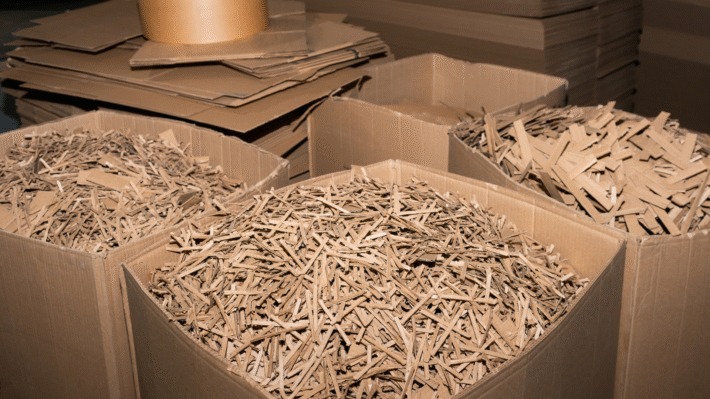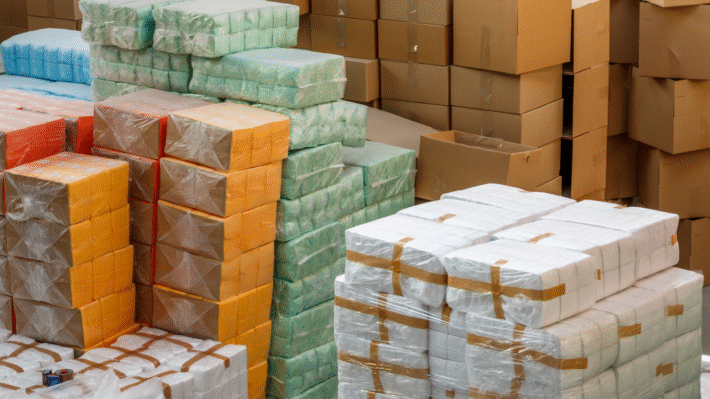Creating a Circular, Efficient, and Safe Metal Recovery System during Ship Dismantling

Welcome to a brave new world where our old sea vessels become hotbeds of resource recovery! No more are the days when we just took old ships to the yard, pulling them apart without a thought. Today, we’re talking about adding circularity to ship dismantling and metal recovery supply chain— a future where each retired vessel enhances safe and efficient material reclamation. Now, that may sound technical, but stick around! By the time you’re through, you’ll be knee-deep in reducing, reusing, and recycling your way to closed-loop systems, not to mention changing the game with advanced sorting tech and waste-to-value innovations. So, pull up your sleeves and let’s dive headfirst into the world of sustainable ship dismantling and efficient metal recovery!
Understanding Circularity in Ship Dismantling
To better comprehend the concept of circularity in ship dismantling, we first need to understand what circularity really means.
What is Circularity?
Reduce, Reuse, Recycle
At the heart of circularity lies the ever-familiar mantra of “Reduce, Reuse, Recycle”. This simple phrase conveys the essence of circular principles, and it serves as the underlying foundation for creating more sustainable models in any industry, including ship dismantling. By reducing waste, reusing valuable components, and recycling materials – we can give old ships a new life, and in the process, help mother nature breathe a little easier.
Closed-Loop Systems
Closed-loop systems are the secret sauce of circularity. In these systems, the output of one process becomes the input for another, creating a loop that minimizes waste. For the ship dismantling sector, this could mean creating a system where waste materials from decommissioned ships are re-integrated back into the economy as valuable inputs for new products. Closed-loop systems take us a step beyond recycling by ensuring that no valuable resource is discarded or wasted.
Importance of Circular Systems
The transition from linear (take-make-dispose) systems to circular ones holds tremendous potential and importance. It not only addresses the geopolitical and environmental challenges posed by resource extraction and waste generation but also presents new economic opportunities.
Environmental Benefits
By adopting circular systems in ship dismantling, we can curb the high environmental costs of traditional ship-breaking practices. It can mitigate the release of hazardous materials like asbestos and lead, reduce carbon emissions, and prevent the pollution of marine ecosystems.
Economic Advantages
Beyond environmental conservation, circular systems in ship dismantling can lead to substantial economic gains. They can open up new opportunities for businesses, create jobs, and even foster innovation in recycling technologies. Moreover, precious materials recuperated from disassembled ships can even serve as a steady source of secondary raw materials for various other sectors.
To sum up, creating circularity in ship dismantling is an ambitious yet achievable goal. It hinges on the simple yet profound principle of making the most out of our resources – and keeping them in use for as long as possible.
Current Practices in Ship Dismantling
Breaking down a ship is no easy feat. There are common methods used to do this very task. Let’s unravel them, shall we?
Methods of Dismantling
Beaching
The good ol’ beaching method. Picture this… Ships are driven onto sandy shores at high speed and then shredded and scrapped in the open. But here’s the rub. It’s dirt cheap but mega risky. Both the environment and worker’s safety are at high stake. Also, sorry to burst your bubble, but this method doesn’t exactly scream “efficiency”!
Dry Docks
Next up, the dry docks. This method involves a special dock that can be drained, allowing the ship to sit dry during dismantling. Sounds nifty, eh? It’s much safer for workers and a tad bit kinder to Mother Nature, but it’s more expensive and, dare I say it, slower than a snail on a lazy Sunday.
Demolition Yards
Lastly, there’s the demolition yards, where ships are broken down in designated safe zones. Now, this is a balance between safety, efficiency, and environmental care! It might cost a pretty penny, but as the adage goes, you get what you pay for!
Challenges in Dismantling
But no matter the method, disassembling a massive structure like a ship comes with its own set of problems. Let’s dive into that.
Hazardous Materials
First, there’s hazardous materials such as asbestos or lead. These elements can be detrimental to worker health and harmful to the ecosystem. Safe handling and correct disposal are paramount! The problem is, it requires extra cost, time, and yes, you guess it…expertise!
Worker Safety Concerns
Then there’s worker safety concerns. Dismantling a ship is physically demanding and can be dangerous. Safety must be a top priority to prevent accidents and look after those hard-working folks putting in the work. But how? That’s the million-dollar question! More on this later.
To wrap this up… Shaping our ship dismantling methods to be both safe and efficient is a colossal task. It’s a challenge that tests both our scientific knowledge and our compassion. But it’s absolutely doable! The road is long, but I’m sure, with constant learning and adapting, we can get there! Don’t believe me? Let’s continue this journey, and I’ll show you how!
Safe and Efficient Material Reclamation
When it comes to ship dismantling and metal recovery, safety and efficiency are key. A well-driven focus on these two areas ensures the optimum circularity that we are aiming for in material reclamation.
Safety Protocols
The heart of enhanced reclamation processes lies in robust safety protocols in place. These protocols assist in mitigating risks associated with recycling activities while maximizing worker safety and efficient recovery.
Training for Workers
Firstly, let’s drive into training for workers. No machine can mirror a well-trained, dedicated human. Knowledge and awareness about safety rules not only reduce accidents but also enhance the quality and efficiency of ship dismantling jobs. Workers should be imparted training about hazardous materials, their safe handling, emergency response, and the correct usage of safety equipment.
Advanced Safety Equipment
Another crucial component is advanced safety equipment. Harnesses, hard hats, safety glasses – these aren’t just basic requirements, they can be life-saving. Furthermore, the integration of remote machinery reduces the need for workers to directly deal with hazardous aspects of ship dismantling, ensuring enhanced safety.
Environmental Regulations
Next, we must discuss environmental regulations. These regulations ensure that the recycling practices align with the broader perspective of environmental safety and sustainability.
Pollution Reduction
First up, pollittion reduction. From air emissions to water waste, each recycling process has its environmental implications. Efficient systems need to minimize emissions and leaching of hazardous materials that potentially contribute to environmental pollution.
Emission Control
Finally, we have emission control. Dust, toxins, smokestacks – the reclamation industry has its own ensemble of villains. Here, strategies aimed at encapsulation, air filtering, and system maintenance can play a significant part to ensure compliance with global standards. More and more work is underway to advance these technologies that promote eco-friendliness and worker health.
In conclusion, safe and efficient material reclamation is not just a concept, it’s an imperative. Implementing well-structured safety protocols and adhering to stringent environmental regulations are critical steps towards creating a sustainable, circular supply chain in ship dismantling and metal recovery industry. Implementing these measures would not only benefit our environment but also our economy and society at large.
Incorporating Technology and Innovation
For us to revolutionize the industry of ship dismantling and truly bring circularity, technology and innovation play a major role. It’s not just about making the old methods better; it’s about taking giant leaps forward.
Technological Advances
Plasma Arc Processes
First, let’s talk about Plasma Arc Processes. Sounds like straight out of a science fiction movie, right? But believe me, when I tell you, it’s real and it’s transforming the way we recover metal from ships. Under high temperatures that reach up to 14,000°C, this technology essentially melts and gasifies waste, making it easier to segregate materials and dramatically increasing recovery rates. Talk about hot stuff!
AI-Driven Analytics
Next up is AI-Driven Analytics. This is where we bring smartness into ship dismantling with advanced analytics to guide decision-making. From predicting material composition to identifying optimal dismantling strategies, AI-driven analytics is paving the way for a smoother, smarter, and safer approach to ship recycling.
Smart Material Recovery
Automated Sorting
In the quest for circularity in ship dismantling, Automated Sorting is like the cherry on top. With the use of robotics and machine learning algorithms, sorting materials for reuse and recycling has become faster, more efficient, and, more importantly, safer for workers involved in the process. Imagine machines doing the heavy lifting while reducing mistakes. Simply brilliant!
Chemical Separation Technology
Last, but no less significant is Chemical Separation Technology. This nifty innovation enables us to extract valuable metals that would have otherwise been difficult to recover in a mixed waste stream. By isolating different materials on a chemical level, we’re taking a giant leap for metal recovery.
Indeed, incorporating technology and innovation is the key to creating circularity in ship dismantling and metal recovery chain. But remember, it’s not just adopting technology for the sake of it. It’s about using these advancements to make the process safer and more efficient. It’s about giving a new life to materials and reducing harmful impacts on our planet. Technology, in this case, is our bridge to a sustainable future. Stay tuned to discover how policy and regulatory frameworks support these advancements and shape the future of our industry.
Policy and Regulatory Frameworks
When it comes to the creation of safe and circular systems in the ship dismantling and metal recovery industry, one major player is policy and regulatory frameworks. They act as the yardstick that determines do’s and don’ts.
Global and National Standards
What do we mean by global and national standards? Simply put, these are agreed rules and policies that guide how we do things, in this case, how we dismantle ships and recover metals. Let’s take a closer look at a couple of key ones.
Hong Kong Convention
The Hong Kong International Convention for the Safe and Environmentally Sound Recycling of Ships is a big-shot when it comes to ship recycling policies. This global standard was designed to ensure that ships, after reaching the end of their life, are safely shredded and recycled, protecting both human health and the environment. It’s like a watchdog, keeping the industry in check and making sure everything remains clean and tidy.
Regulations in the EU
On the flip side, we also have national regulations that add some local flavor to the blanket global standards. A great case to study would be the European Union (EU). The EU isn’t just about baguettes and pizza, they’re big on the environment too! They’ve got strict standards that push for safe ship recycling and efficient metal recovery. Aligned with the Hong Kong Convention, EU policies are all about reducing environmental harm and promoting the health and safety of workers.
Incentives and Subsidies
But, look, no one said shifting towards a safer, more circular economy would be easy, or cheap. So, to grease the wheels a bit, incentives and subsidies are introduced.
Tax Breaks for Compliance
Everyone likes a good tax break, right? Governments can offer these to companies that adhere to safe dismantling practices and work towards creating a closed-loop supply chain. Think of it as a, ‘Hey, great job for not ruining the planet. Here’s a small token of appreciation, goes to show that good deeds don’t go unnoticed.
Support for Innovation
Innovative ideas are as good as gold in this industry. But turning an idea into reality can be quite costly. So, more support, funding and financial incentives are offered for innovative projects that help in the transition towards a circular economy. It’s like saying, ‘We like that brilliant mind of yours, let’s help you turn those bright ideas into reality!’
On the whole, policies and regulations help shape the industry, guiding the actions of all participants towards achieving safe and efficient ship dismantling and metal recovery. The road to circularity in the industry might be bumpy, but with the right global and national regulations in place, along with some juicy incentives, it’s an incredibly rewarding journey. So let’s buckle up and enjoy the ride!
Future of Ship Dismantling and Metal Recovery
As we cast our eyes to the horizon, we’re seeing an exciting series of developments in the world of ship dismantling and metal recovery. It’s like opening a treasure chest filled with gold, except that gold is the progress we’re making in creating safer, more efficient, and eco-friendly practices!
Role of Emerging Technologies
Technology! Isn’t it incredible? It’s the magical wand that can transform how we handle ship dismantling and metal recovery. Let’s spill the beans and introduce you to some of the tech wonders: Artificial Intelligence (AI) and Robotics, and 3D Printing.
AI and Robotics
AI and Robotics are no longer a futuristic dream. They’ve arrived, and they’re transforming everything from the way we eat breakfast to ship dismantling. By automating tasks like sorting and dismantling, we not only improve safety but also increase efficiency. Smarter machines mean fewer mistakes and accidents, ensuring our hardworking ship recyclers can sleep easy at night. Additionally, robots don’t need lunch breaks or sick days, so the efficiency boost is undeniable!
3D Printing
Moving on, let’s chat about 3D Printing. Currently in its early stages, this tech wizard has the potential to revolutionize our industry. Imagine being able to print replacement parts right at the shipyard, saving time, energy, and planetary resources. It’s an exciting prospect that has us all eagerly waiting to see how it develops!
Opportunities in Circular Economy
The future isn’t just about technology; it’s also about reshaping our economy in a way that benefits us all. A circular economy is one where we strive to eliminate waste and continually use resources – just like how a circle has no end! This approach presents two critical opportunities: Economic Growth and Sustainable Practices.
Economic Growth
In a circular economy, every old ship is an opportunity for growth and employment. As we improve our neutral ship recycling techniques, we create jobs and opportunities for local communities, fostering economic development. Plus, by selling valuable materials recovered from dismantling, we’re creating new revenue streams. In short, it’s a win for workers, businesses, and economies worldwide!
Sustainable Practices
Last, but certainly not least, is the opportunity to build a more sustainable future. By adopting circularity principles, we can drastically reduce environmental harm and ensure our children inherit a healthier planet. If every ship dismantler, recycler, and manufacturer commits to sustainable practices, we can significantly shrink our ecological footprint. While we can’t wave a magic wand and solve all environmental issues overnight, every step we take gets us closer to that goal.
In conclusion, the future of ship dismantling and metal recovery is brimming with hope and promise, all thanks to our science wizards and innovative efforts. Each day, we’re devising better technologies, smarter methods, and more sustainable practices that will lead us to a better tomorrow.



